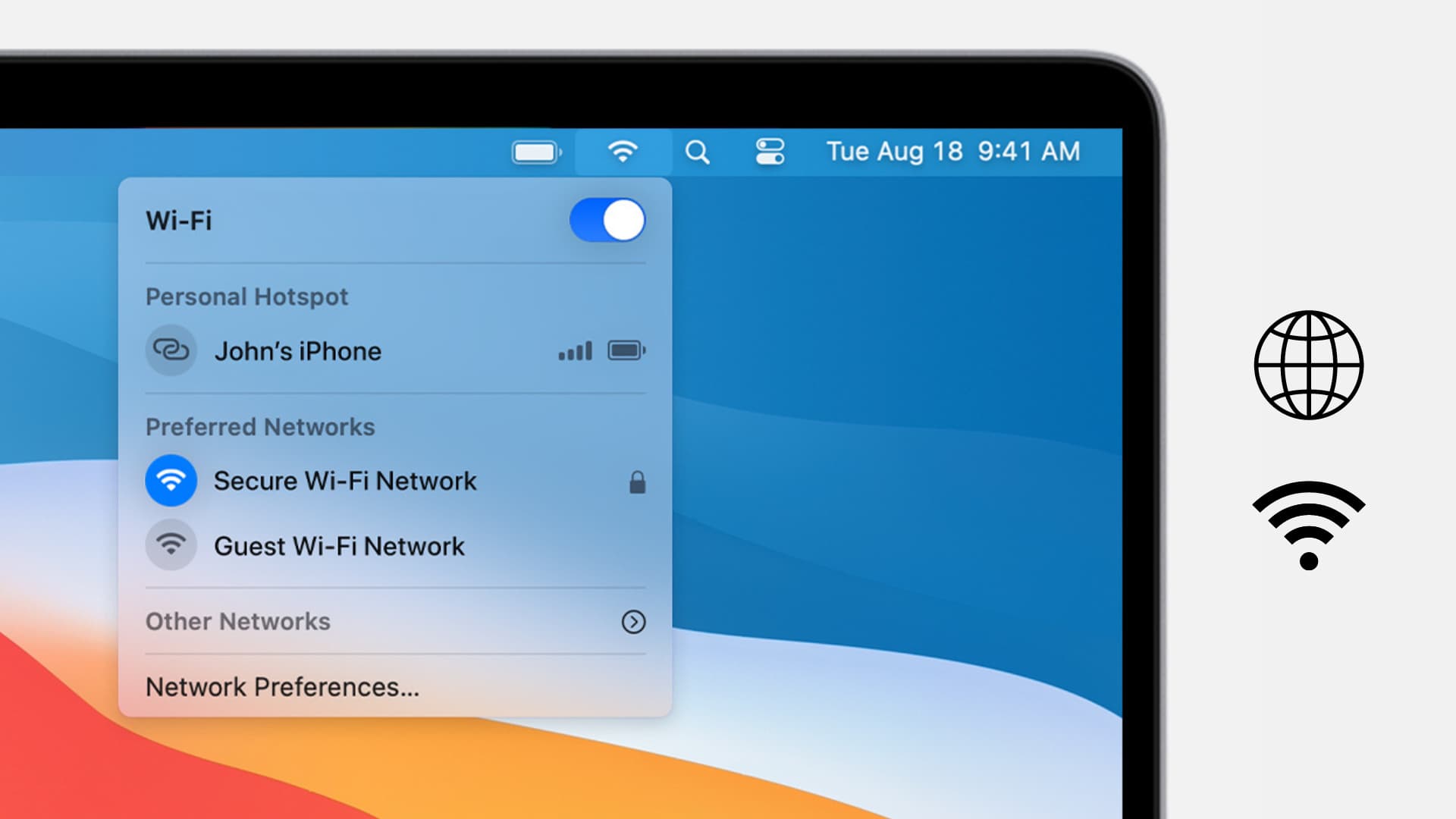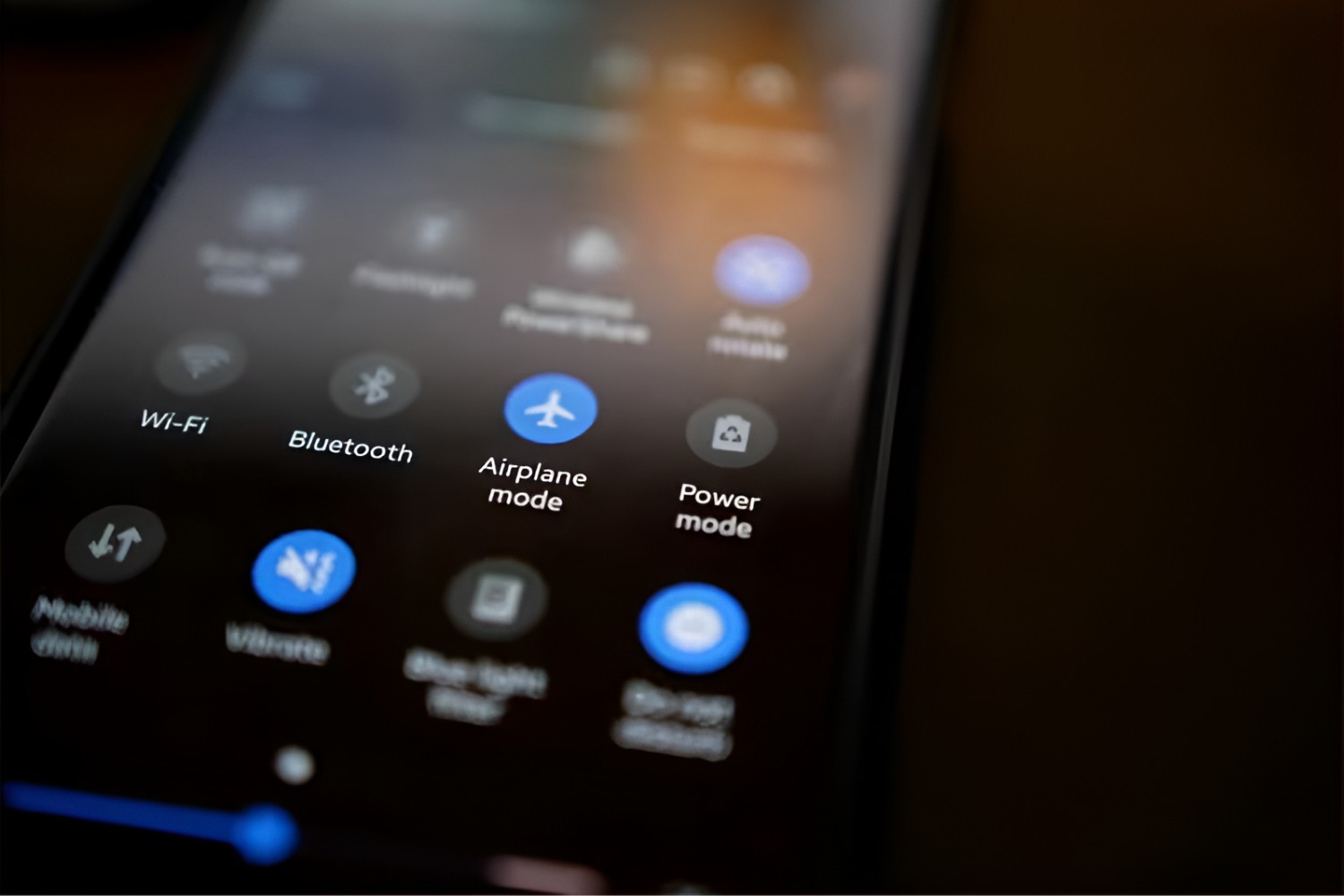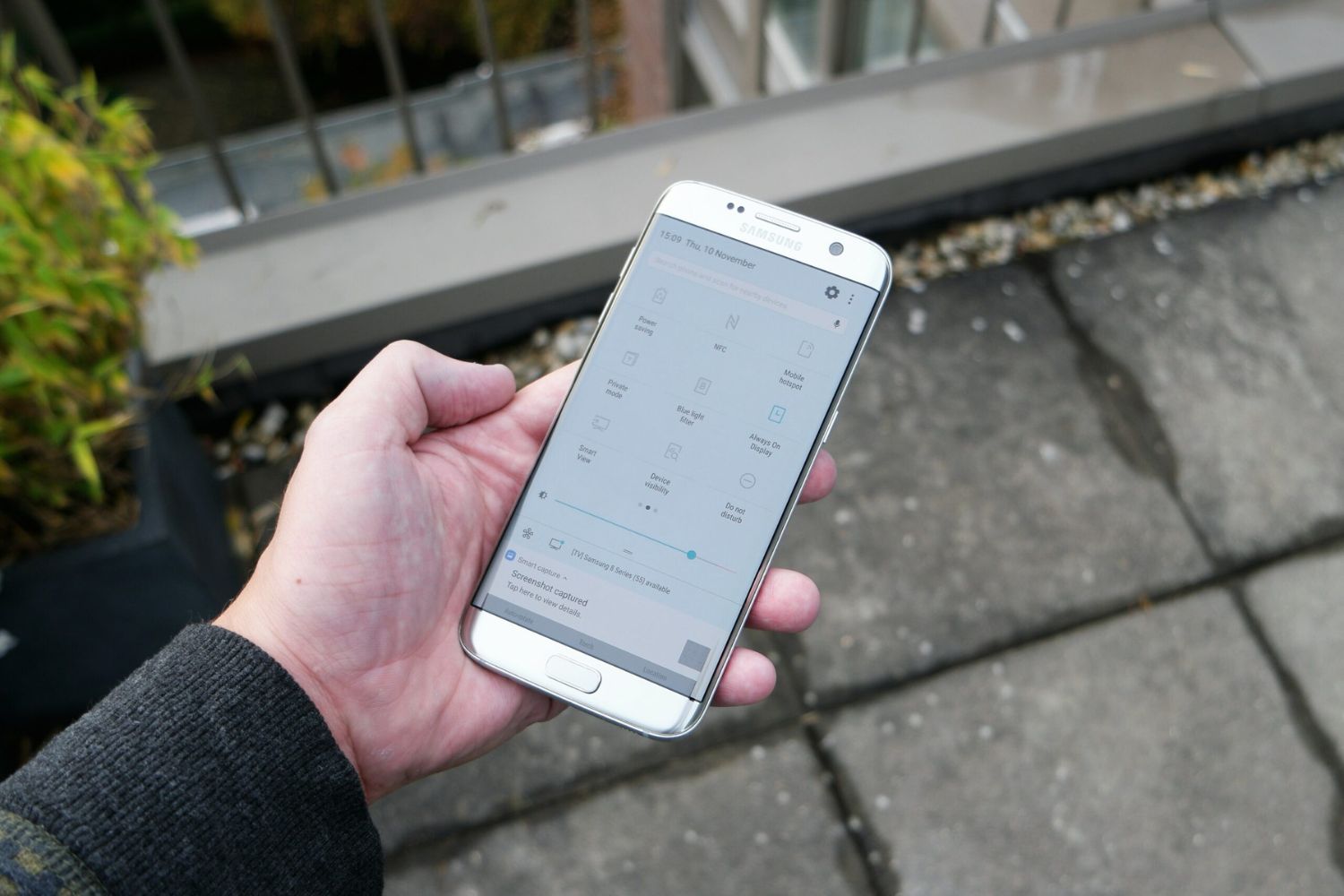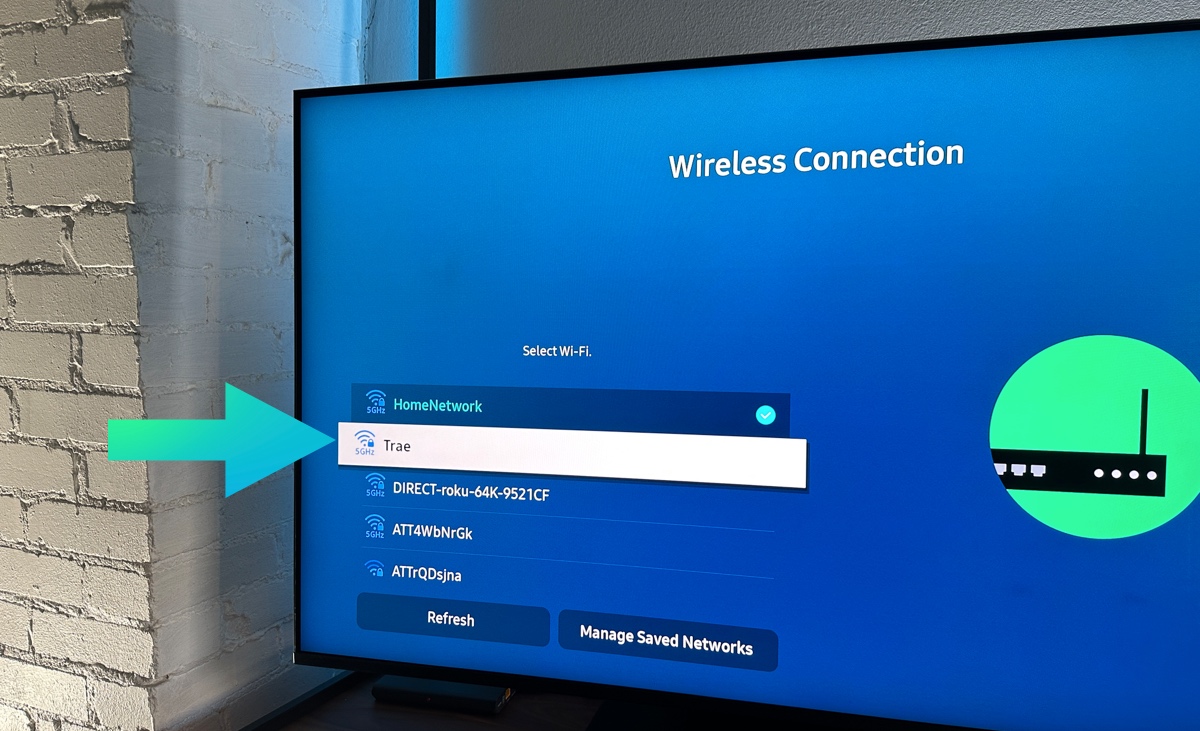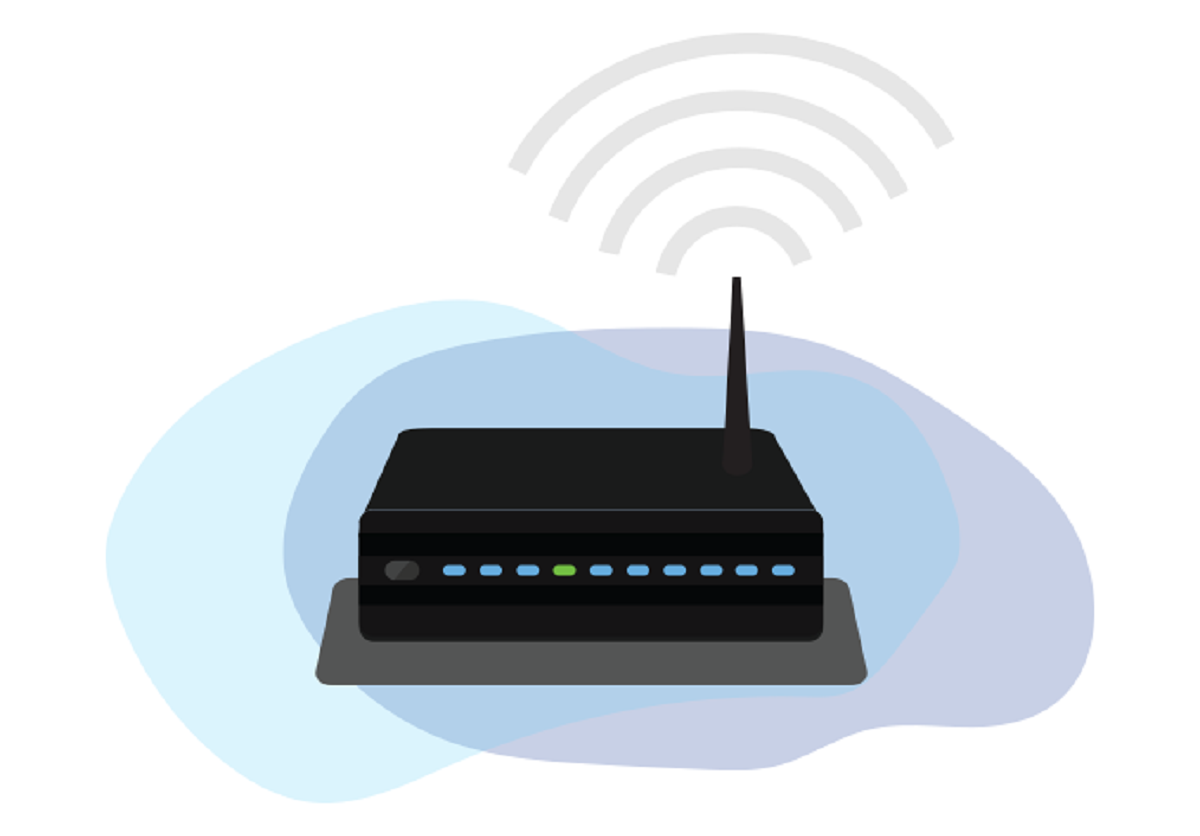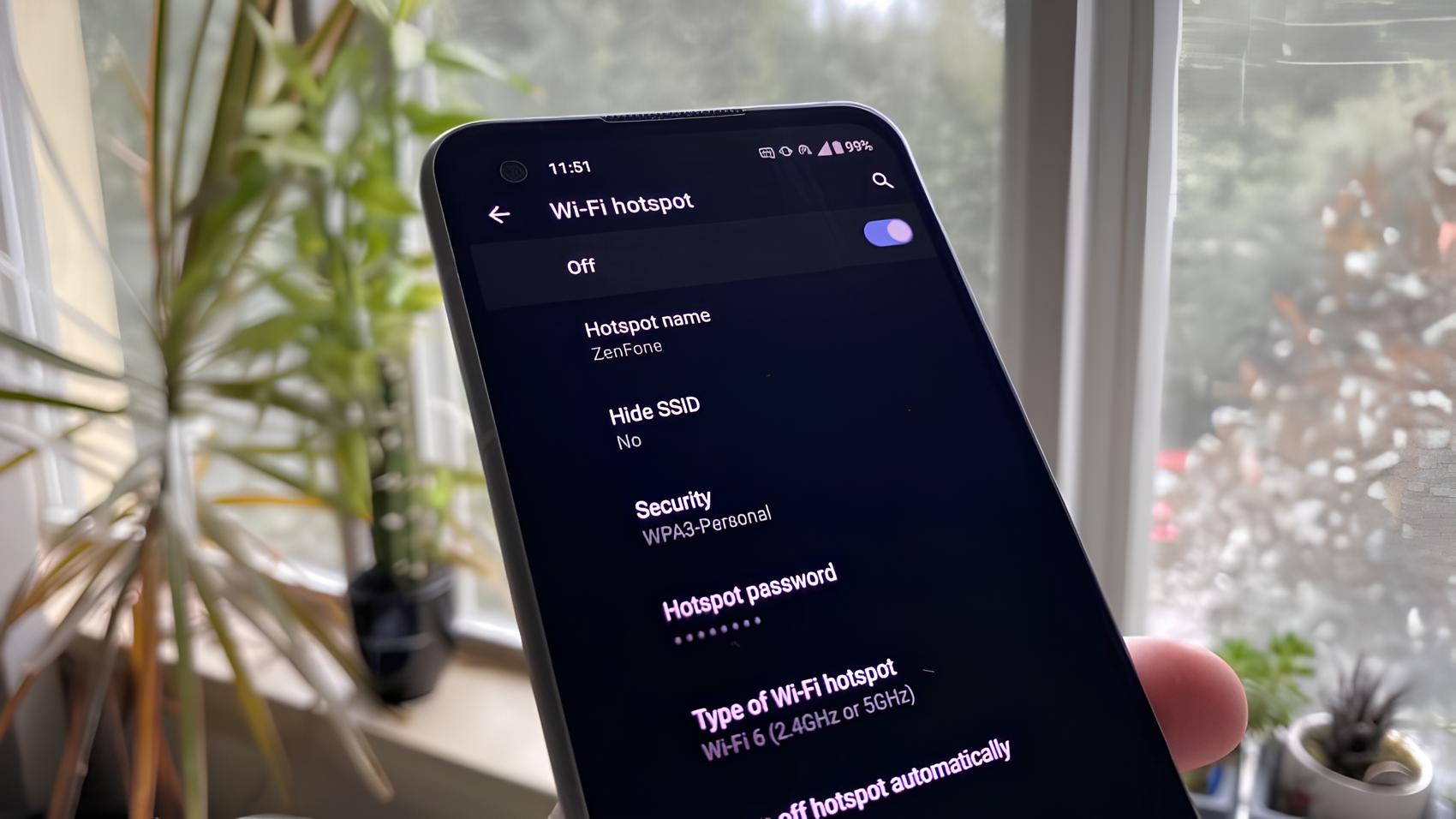Introduction
When it comes to staying connected on the go, a personal hotspot can be a lifesaver. Whether you're traveling, working remotely, or simply in a location with limited Wi-Fi access, the ability to turn your Mac into a mobile hotspot provides the flexibility and convenience you need to stay productive. However, like any technology, issues can arise, and troubleshooting hotspot connection problems on your Mac may become necessary. In this guide, we'll explore some common fixes for hotspot connection issues on Mac, empowering you to regain seamless access to the internet and get back to what matters most.
From intermittent connectivity to outright failure to establish a connection, hotspot issues can be frustrating and disruptive. Understanding the steps to troubleshoot these problems is essential for maintaining your productivity and peace of mind. Whether you're a digital nomad, a remote worker, or someone who simply relies on their Mac's hotspot feature, having the knowledge to address connectivity issues is invaluable.
So, if you've found yourself facing a stubborn hotspot connection problem on your Mac, fear not. We're here to walk you through the troubleshooting process, providing practical solutions and expert tips to help you overcome these challenges. By the end of this guide, you'll be equipped with the know-how to tackle hotspot connection issues with confidence, ensuring that your Mac's hotspot remains a reliable and indispensable tool for staying connected wherever you go. Let's dive in and get your Mac's hotspot back up and running smoothly.
Check Network Settings
Checking the network settings on your Mac is a fundamental step in troubleshooting hotspot connection issues. By verifying and adjusting these settings, you can potentially resolve connectivity problems and ensure that your Mac's hotspot functions seamlessly. Here's a detailed look at how you can check and adjust the network settings to address hotspot connection issues:
-
Verify Hotspot Configuration: Start by confirming that the hotspot feature on your Mac is correctly configured. Access the Network Preferences panel and ensure that the hotspot feature is enabled and set up with the appropriate network name and password. If any details appear incorrect or if the hotspot feature is disabled, make the necessary adjustments and activate the hotspot.
-
Check Wi-Fi Settings: Next, review the Wi-Fi settings on your Mac. Ensure that the Wi-Fi adapter is turned on and that the appropriate network is selected. If you're experiencing connectivity issues, it's possible that your Mac may be attempting to connect to a different network or encountering interference from nearby networks. Verify that your Mac is connected to the correct Wi-Fi network and that the signal strength is adequate for a stable connection.
-
Inspect IP Configuration: The IP configuration of your Mac can impact its ability to establish a successful hotspot connection. Check the IP address, subnet mask, router address, and DNS server settings to ensure that they are correctly assigned. In some cases, manually renewing the DHCP lease or adjusting the IP configuration settings can resolve connectivity issues.
-
Review Firewall Settings: Firewalls play a crucial role in network security, but they can also affect connectivity. Review the firewall settings on your Mac to ensure that they are not excessively restrictive, potentially blocking the necessary traffic for the hotspot connection. Temporarily disabling the firewall for troubleshooting purposes can help identify if it's a factor in the connectivity issue.
-
Diagnose Network Interfaces: Use the Network Diagnostics tool on your Mac to diagnose network interface issues. This built-in utility can identify and potentially repair common network problems, offering insights into any underlying issues affecting your Mac's ability to establish a hotspot connection.
By meticulously checking and adjusting the network settings on your Mac, you can proactively address potential obstacles to establishing a stable hotspot connection. This approach empowers you to resolve common connectivity issues and optimize the performance of your Mac's hotspot, ensuring a reliable and seamless internet connection whenever you need it.
Restart Hotspot
If you're encountering connectivity issues with your Mac's hotspot, restarting the hotspot feature can often serve as a simple yet effective troubleshooting step. This process involves temporarily disabling the hotspot, allowing your Mac to reset its network configurations, and then reactivating the hotspot to establish a fresh connection. Here's a comprehensive look at how you can restart the hotspot on your Mac to address connectivity issues:
-
Disable Hotspot: Begin by accessing the Network Preferences panel on your Mac. Locate the hotspot feature and disable it. This action effectively halts the hotspot functionality, allowing your Mac to terminate any existing network connections associated with the hotspot.
-
Wait and Reset: After disabling the hotspot, allow a brief period for your Mac to reset its network configurations. This interval enables the system to clear any temporary network-related data and prepare for the reactivation of the hotspot.
-
Re-enable Hotspot: Once the waiting period has elapsed, re-enable the hotspot feature on your Mac. This action triggers the initiation of a new hotspot session, effectively establishing a fresh network connection and addressing any potential issues that may have been hindering connectivity.
-
Verify Connection: After restarting the hotspot, verify that your other devices are able to detect and connect to the newly activated hotspot on your Mac. Ensure that the network name and password are correctly displayed and that the connection process proceeds smoothly.
-
Test Stability: Conduct a brief test to assess the stability and performance of the reactivated hotspot connection. Verify that data transfer and internet access are functioning as expected, ensuring that the hotspot is providing a reliable and seamless connection to your other devices.
By following these steps to restart the hotspot on your Mac, you can effectively reset the network configurations and address potential obstacles that may have been impeding connectivity. This straightforward approach often proves to be an efficient solution for resolving common hotspot connection issues, allowing you to swiftly regain access to a stable and dependable internet connection on your Mac.
Incorporating the practice of periodic hotspot restarts can also serve as a proactive measure to maintain the optimal performance of your Mac's hotspot feature, preventing potential connectivity issues from arising in the first place. This simple yet impactful troubleshooting step empowers you to swiftly address connectivity challenges and ensure that your Mac's hotspot remains a reliable and indispensable tool for staying connected wherever you go.
Update Mac Software
Ensuring that your Mac's operating system and software are up to date is a crucial aspect of maintaining optimal performance and addressing potential connectivity issues with the hotspot feature. Software updates often include bug fixes, security enhancements, and improvements to network functionality, making them a valuable resource for troubleshooting and maintaining the stability of your Mac's hotspot connection.
To update your Mac's software, follow these steps:
-
Check for Updates: Begin by accessing the "System Preferences" on your Mac. Navigate to the "Software Update" section, where you can initiate a manual check for available updates. Your Mac will search for the latest software updates provided by Apple.
-
Download and Install Updates: If updates are available, your Mac will present them for download and installation. Ensure that you have a stable internet connection, as the update process may involve downloading sizable data packages. Follow the on-screen prompts to initiate the download and installation of the updates.
-
Restart Your Mac: After the updates have been installed, it's advisable to restart your Mac. This action allows the system to apply the updates and finalize any necessary configuration changes, ensuring that the updated software components are fully integrated.
By keeping your Mac's software up to date, you equip your system with the latest improvements and enhancements, including those that directly impact network connectivity and the performance of the hotspot feature. Software updates often address known issues and vulnerabilities, providing a proactive approach to maintaining the stability and reliability of your Mac's hotspot connection.
In addition to addressing specific connectivity issues, staying current with software updates contributes to the overall security and functionality of your Mac, enhancing its ability to provide a seamless and dependable hotspot experience. By prioritizing regular software updates, you empower your Mac to deliver optimal performance and address potential obstacles that may impact its ability to establish and maintain a stable hotspot connection.
By incorporating the practice of routinely updating your Mac's software, you demonstrate a proactive commitment to maintaining the health and functionality of your system, ensuring that your Mac's hotspot remains a dependable and valuable tool for staying connected in various environments.
Reset Network Settings
Resetting the network settings on your Mac can serve as a potent troubleshooting technique when encountering persistent hotspot connection issues. This process involves reverting various network configurations to their default states, effectively eliminating potential underlying issues that may be impeding connectivity. By initiating a network settings reset, you can address a wide range of network-related challenges and restore your Mac's ability to establish a stable and reliable hotspot connection.
To reset the network settings on your Mac, follow these steps:
-
Access Network Preferences: Begin by accessing the Network Preferences panel on your Mac. This can be achieved by navigating to the "System Preferences" and selecting the "Network" option. Within the Network Preferences panel, you'll have access to a range of network-related settings and configurations.
-
Select Network Reset Option: Within the Network Preferences panel, locate the option to reset network settings. This may be presented as a dedicated reset button or a specific menu option, depending on the version of macOS running on your Mac. Click on this option to initiate the network settings reset process.
-
Confirm Reset Action: Upon selecting the network reset option, your Mac may prompt you to confirm the action. This confirmation step is essential to prevent accidental or unintended changes to your network configurations. Verify that you intend to proceed with the network reset.
-
Await Completion: Once the network reset process has been initiated, your Mac will proceed to revert various network settings to their default configurations. This may include network interfaces, DNS settings, DHCP configurations, and other network-related parameters. Allow the process to complete, ensuring that your Mac finalizes the reset action.
-
Reconfigure Network Connections: After the network reset is complete, you may need to reconfigure certain network connections, such as Wi-Fi networks and VPN settings. Verify that your preferred network connections are accurately configured and that the necessary credentials are entered.
By resetting the network settings on your Mac, you effectively eliminate potential configuration issues that may have been contributing to hotspot connectivity challenges. This comprehensive reset action provides a fresh start for your Mac's network configurations, allowing it to establish a stable and reliable hotspot connection without the burden of lingering network-related obstacles.
Incorporating the practice of periodically resetting network settings can also serve as a proactive measure to maintain the optimal performance of your Mac's network connectivity. By periodically refreshing the network configurations, you mitigate the risk of persistent connectivity issues and ensure that your Mac's hotspot remains a dependable tool for staying connected in diverse environments.
By following these steps to reset the network settings on your Mac, you empower yourself to efficiently address potential network-related obstacles and maintain the stability and reliability of your Mac's hotspot connection.
Check for Interference
When troubleshooting hotspot connection issues on your Mac, it's essential to consider the potential impact of interference from other electronic devices and wireless networks in the vicinity. Interference can disrupt the stability and performance of your Mac's hotspot, leading to connectivity issues and degraded network functionality. By identifying and addressing sources of interference, you can significantly improve the reliability of your hotspot connection.
Here are the steps to check for interference and mitigate its effects on your Mac's hotspot:
-
Assess Nearby Devices: Begin by assessing the presence of other electronic devices in the vicinity of your Mac. Devices such as cordless phones, microwave ovens, and Bluetooth-enabled gadgets can emit signals that interfere with Wi-Fi networks, potentially affecting the performance of your Mac's hotspot. Identify any such devices and consider relocating them or minimizing their usage when attempting to establish a stable hotspot connection.
-
Analyze Wi-Fi Channels: Wi-Fi networks operate on specific channels within the 2.4GHz and 5GHz frequency bands. If multiple Wi-Fi networks are active in your location, there is a possibility of channel overlap, leading to interference. Use a Wi-Fi analyzer tool or app to identify the channels used by nearby networks. By selecting a less congested channel for your Mac's hotspot, you can minimize the impact of interference and improve connectivity.
-
Optimize Router Placement: If you're using a separate router in conjunction with your Mac's hotspot, ensure that the router is strategically positioned to minimize interference. Avoid placing the router near large metal objects, dense walls, or other electronic devices that could disrupt the propagation of Wi-Fi signals. By optimizing the placement of the router, you can enhance the overall performance of your Mac's hotspot.
-
Utilize 5GHz Band: If your Mac and connected devices support the 5GHz Wi-Fi band, consider utilizing this frequency instead of the more commonly used 2.4GHz band. The 5GHz band offers greater resistance to interference from other devices and networks, potentially resulting in a more stable and reliable hotspot connection.
-
Implement Wireless Security: Enabling robust wireless security measures, such as WPA2 encryption, on your Mac's hotspot can help mitigate the impact of interference by preventing unauthorized devices from disrupting the network. By securing your hotspot with strong encryption, you enhance its resilience against external interference sources.
By proactively checking for interference and implementing mitigation strategies, you can significantly improve the stability and performance of your Mac's hotspot connection. Identifying and addressing potential sources of interference empowers you to create an environment conducive to reliable and uninterrupted network connectivity, ensuring that your Mac's hotspot remains a dependable tool for staying connected in diverse settings.
Contact Apple Support
If you've diligently attempted the troubleshooting steps outlined above and continue to encounter persistent hotspot connection issues on your Mac, reaching out to Apple Support can provide invaluable assistance. Apple's dedicated support channels offer access to knowledgeable experts who can delve into the specifics of your situation, identify underlying issues, and provide tailored guidance to address the connectivity challenges you're facing.
When reaching out to Apple Support, you have several options to engage with their support team. The following avenues are available for seeking assistance with your Mac's hotspot connectivity problems:
-
Apple Support Website: Apple's official support website serves as a comprehensive resource for troubleshooting and obtaining assistance. You can access a wealth of support articles, user forums, and troubleshooting guides tailored to addressing a wide range of technical issues, including network connectivity challenges.
-
Phone Support: Apple offers phone support for customers seeking direct assistance with their Mac-related concerns. By contacting Apple's support hotline, you can engage in real-time communication with a support representative who can guide you through troubleshooting steps, provide personalized recommendations, and escalate your case if necessary.
-
Genius Bar Appointments: If you prefer an in-person support experience, scheduling an appointment at an Apple Store's Genius Bar allows you to consult with Apple's retail staff and technical experts. They can assess your Mac's hotspot connectivity issues firsthand, offer diagnostic services, and provide personalized solutions to address the specific challenges you're encountering.
-
Online Chat Support: Apple's online chat support feature enables you to engage in text-based conversations with support representatives, allowing you to articulate your hotspot connectivity issues and receive real-time guidance on potential solutions and next steps.
When engaging with Apple Support, it's beneficial to provide detailed information about the hotspot connectivity issues you're experiencing. Describing the specific symptoms, error messages, and patterns of connectivity disruptions can aid the support team in diagnosing and addressing the root causes of the problems effectively.
By leveraging Apple's support resources and engaging with their knowledgeable staff, you can gain access to expert guidance, targeted troubleshooting strategies, and potential resolutions tailored to your Mac's hotspot connectivity challenges. This proactive approach empowers you to tap into Apple's technical expertise, ensuring that you receive comprehensive support to overcome persistent hotspot connectivity issues and maintain the optimal functionality of your Mac's network capabilities.







